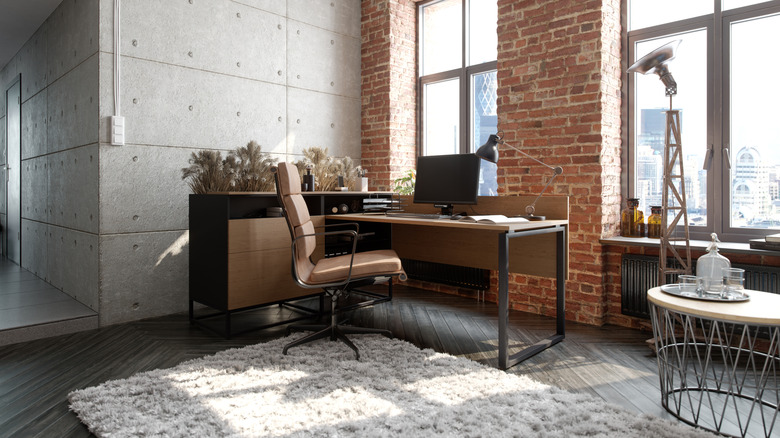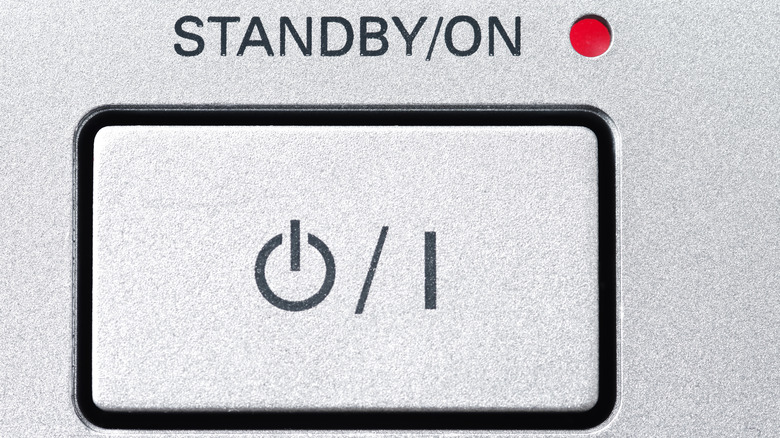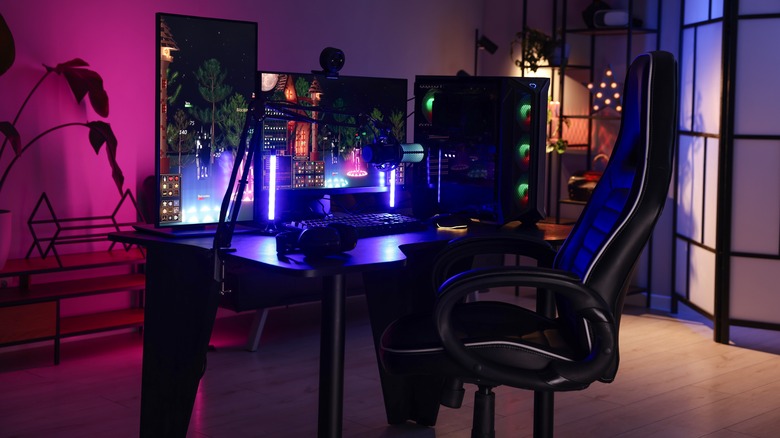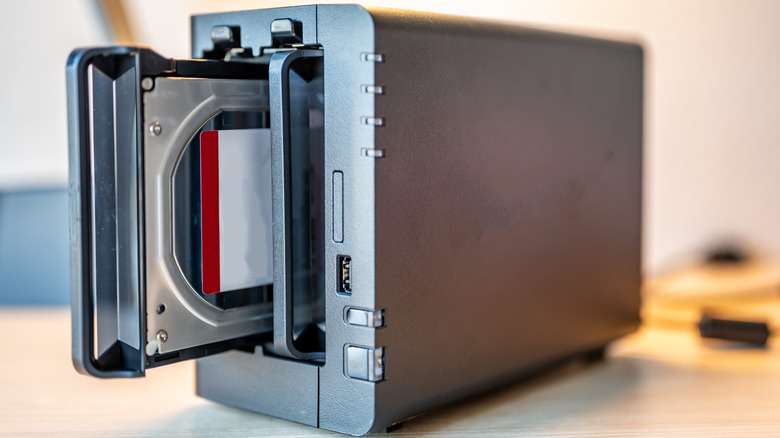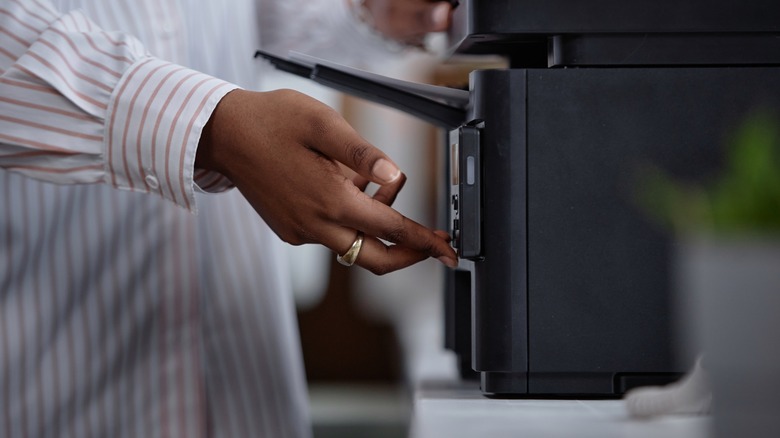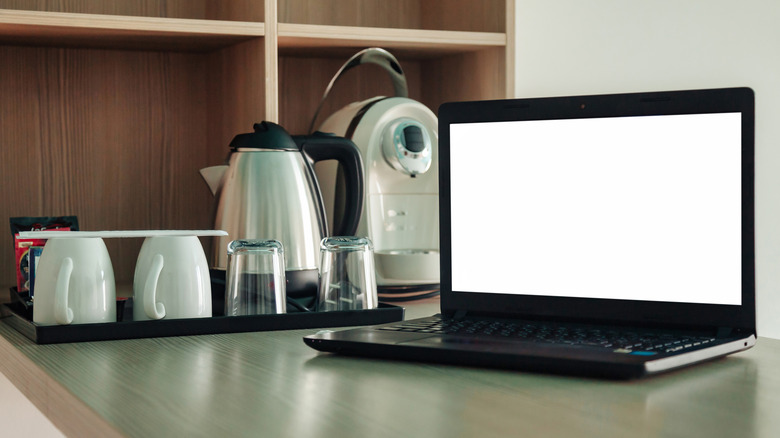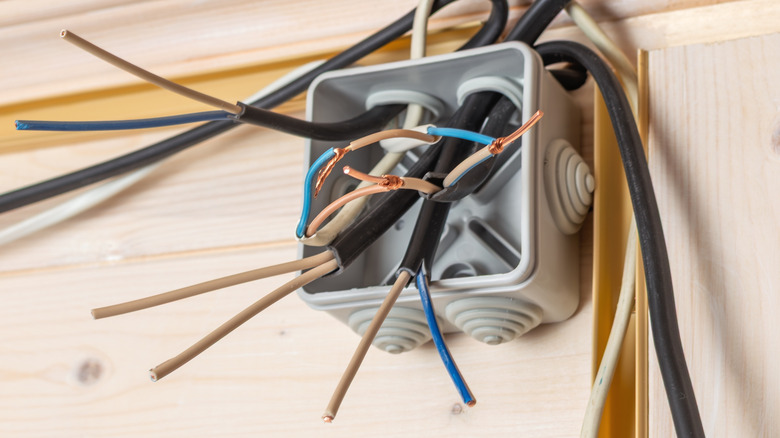10 Things In Your Home Office That Are Secretly Increasing Your Electric Bill
Work is about being connected. It's about communication, knowledge transfer, and getting what you need precisely when you need it ... not before, and certainly not after. What you might hear in all of that is a pro-technology manifesto in the making. Fair enough. But the other thing you might hear is the sound of your electric meter whirring faster and faster as the phones, computers, printers, internet routers, network-attached storage devices, and the rest of it suck down power faster and faster.
And we've gotten in the habit of bringing those devices — and the power bills that come with them — home with us. Residential power consumption increased by as much as 30 percent during the COVID lockdowns in some areas of the U.S., while commercial power consumption decreased. Sure, some portion of that was probably your kids doing science experiments in the kitchen. But some of it was also firing up your computer for Zoom meetings and impromptu team chats.
You might be able to separate work from home with clever design, but separating office and home expenses on your power bill can be truly tricky. Sometimes the power users are obvious, but other times it can sneak up on you. Let's look at some of the power-mad entities besides your boss you might work with on an average day in your home office.
Vampire loads
When you think of hidden or secret electricity use, it's natural to tune into ominously named "vampire loads" (aka "phantom power"). This is the power draw of a device while not being used, usually in a standby state or using electricity to power things like clock displays. The U.S. Department of Energy estimates that vampire loads cost the average homeowner around $200 per year, and home office equipment is particularly prone to staying immediately available by staying in standby mode. Consider using a smart plug to make your utility bills more affordable by tracking down power vampires.
Overbuilt computers
Using a high-powered desktop computer when a smaller, more energy-efficient computer would do is a sure way to watch your power bills climb. Features like high-end graphics processing units (GPUs) are tempting in the home office environment but can draw considerably more power than systems like mini PCs. More powerful CPUs draw more power, while less efficient power supply units (PSUs) deliver it with more waste. Ultimately, you might be better served by a less capable machine that uses less power but still allows you to get the job done.
Servers
Data centers are famously great hogs of electricity, but what about your home office? If you have reason for a proper server at home (for running certain applications or offloading processing from your desktop), prepare yourself for a higher power bill. Servers sound like airplanes taking off because they use multiple fans to cool energy-hungry CPUs, to the tune of over 20 kilowatts a day in some cases. And if you have multiple servers, as in a home lab, all bets are off.
Printers and photocopiers
Your home office might not contain the full suite of office machines, but there's an excellent chance you have a printer and some chance you have a photocopier, both of which are usually energy-inefficient. A home printer can use as much as 550 watts per hour, while a commercial-grade printer can actually use more power than a copier. Also, look out for standby mode on these machines, which can consume lots of power just to keep them readily available.
Lighting
Beautiful home office lighting can improve your productivity, but it can also drain your bank account. In spite of the advent of energy-efficient LEDs, lighting still represents 18 percent of the energy used in small offices, and if you run a brightly lit home office all day long, whether you need the light or not, you're probably throwing money away. Use task lighting and natural light, and consider putting lights on a timer or a motion sensor. A 38-watt LED might cost you less than a penny per hour, but that's still over $7 per month.
Windows
But be careful with natural light as well. While windows don't directly use electricity in your home office, they can contribute significantly to the most power-hungry part of any home: the HVAC system. Use blinds to minimize the necessity for air conditioning during the day, and keep them closed at night to minimize heat loss. Conversely, open the blinds on south-facing windows during winter to warm up your office without any energy consumption at all.
Desk fans
Especially when a home office was an afterthought, it's not uncommon to find them situated in parts of our homes with subpar heating and cooling efficiency, like bonus rooms or converted garage spaces. This can lead to the need for items like desk fans to make hot days manageable or, even worse, portable heaters to get you through the cold months. But electric motors are almost always fond of scarfing down enormous amounts of power, and a simple, small desk fan can use 50 watts of power per hour.
Duplicated appliances
It probably doesn't register as a big concern, but it can be a tempting convenience (especially if you service any clients in your home office) to have appliances that you also have elsewhere in your home. These are typically kitchen-oriented devices like tea kettles, coffee pots, and even a microwave or a mini-fridge. But you might also find yourself with an extra printer. These can add up quickly. Kettles, for example, are notorious power consumers. A small fridge, kettle, microwave, and coffee maker can combine to use well over 2 kWh of electricity per day.
Bad or improvised wiring
Remember that warning about heating and cooling in unplanned or improvised home office spaces? Well, another thing that can happen is that wiring added to a space to accommodate a new office can be done poorly enough to draw unnecessary energy, which gets wasted in the form of heat. Even worse, overloading circuits in an improvised space can produce the same effects and therefore disguise faulty wiring that is costly and dangerous. And worse yet, by a mile, both of these situations are serious fire hazards.
Rechargeable devices
It's almost absurd how many things we use are now rechargeable... phones, tablets, laptops, label makers, keyboards/mice, speakers, lamps, and power banks used to keep things charged on the road. Yet rechargeable devices sometimes don't register as users of actual electricity. And it's true that some devices, like smartphones, cost relatively little to charge ... but of course it all adds up. And the hidden cost of these chargers is that they famously use a lot of vampire power, and fully charged devices left on a charger tend to waste electricity as well.
